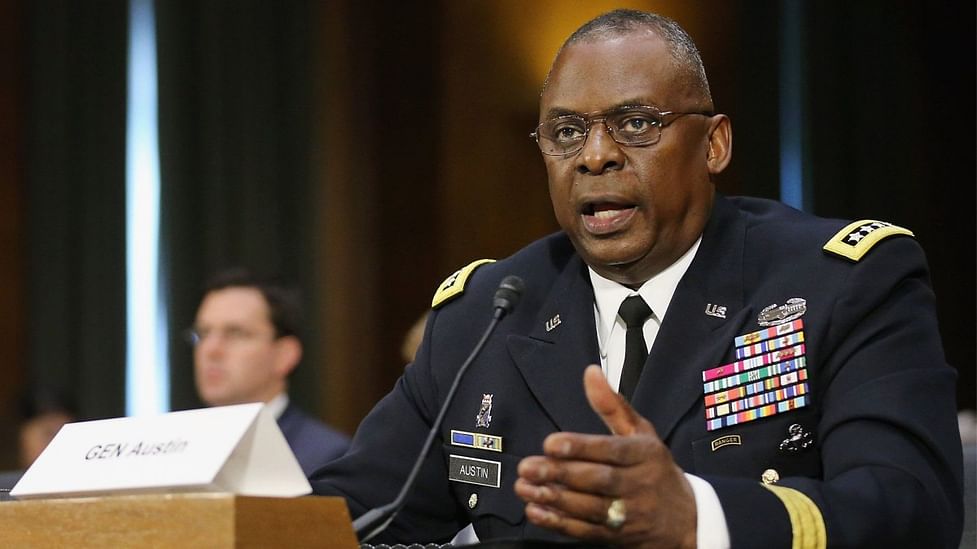Formation of QUAD 2.0, What Does It Signify For India, With The New Alliance of the US, Australia, Japan, and the Philippines?
The formation of QUAD 2, comprising the United States, Australia, Japan, and the Philippines, raises questions about its significance. It appears to be an expansion of the existing QUAD framework, indicating a broader engagement and cooperation in the Indo-Pacific region, but what about India?

Last week, India observed as its Quad partners, namely the US, Japan, and Australia, actively engaged with The Philippines to establish a sort of Quad 2.0.
The inclusion of the Philippines suggests a concerted effort to address regional security challenges, enhance maritime security, promote economic stability, and counterbalance the influence of other powers in the region.
India Not Part Of QUAD 2.0?
It is interesting to consider why the United States feels the need for a new QUAD in the Indo-Pacific when a strong QUAD already exists, consisting of the US, Japan, and Australia. Moreover, the exclusion of India as a member raises questions.
Thus, the dynamics and priorities behind the formation of QUAD 2 warrant closer examination to comprehend the motivations and potential implications.

The Change In Stance
It is worth noting that on May 2, 2023, the US clarified that there are currently no plans to add new members to the QUAD grouping. This statement indicated that, for the time being, the QUAD would not undergo further expansion beyond its existing composition.
On May 17, due to President Biden’s absence, the Australian Prime Minister announced the cancellation of the Sydney QUAD meeting. This decision came as a surprise since it was previously stated that the QUAD meeting would proceed even without President Biden’s presence.
Thus, the cancellation clearly highlights the impact of leadership dynamics and their influence on QUAD engagements.
What Is The QUAD And The Changing Dynamics
The Quadrilateral Security Dialogue (QUAD) is an informal strategic forum between the United States, Japan, Australia, and India.
It aims to promote a free and open Indo-Pacific region based on democratic values and respect for international law.
The QUAD members engage in regular discussions on various regional and global issues, including security, economics, and infrastructure development. However, the recent developments involving QUAD 2 demonstrate an evolving landscape and potential recalibration of alliances within the Indo-Pacific.

The Meeting, 2.0 QUAD
In line with these objectives, Secretary Austin convened a historic in-person meeting in Singapore last week, bringing together Japanese Defense Minister Yasukazu Hamada, Australian Deputy Prime Minister and Defense Minister Richard Marles, and Carlito Galvez, the Defense Minister of The Philippines. This meeting marked the first-ever defence ministerial-level gathering of these four nations.
Secretary Austin emphasized that the purpose of the meeting was to explore opportunities for expanding cooperation among the four nations, particularly in the South China Sea.
He reiterated their shared vision of advancing a free and open Indo-Pacific region, highlighting the unity and common goals among the participating countries. The meeting took place on the sidelines of the Shangri-La Dialogue, further underscoring its significance and relevance in the regional security landscape.

Is India Not Concerned?
India, as a member of the Quad alongside the US, Australia, and Japan, reportedly views the formation of this new group with no cause for concern. Diplomatic sources indicate that India believes the priorities of the two groupings are different, despite aligning with the broader vision of a “free and open Indo-Pacific.”
The new group is seen to have a stronger military focus, specifically addressing issues related to the South China Sea, where China’s military activities have raised concerns. In contrast, the Quad primarily emphasizes humanitarian and disaster relief challenges.
Experts, such as Derek Grossman, a Senior Defense Analyst at the US-based RAND Corporation, believe that the new defence arrangement does not pose a threat to India’s position in the original Quad. Grossman highlights that these are two separate initiatives that can coexist harmoniously.
He further notes that the new Quad is more explicitly aimed at countering China, which differs from the original version. Grossman suggests that India, with its cautious approach toward China, may prefer to remain outside the new grouping, while Australia, Japan, and the US take a more proactive stance.
Jagannath Panda, the Head of the Stockholm Center for South Asian and Indo-Pacific Affairs, stated that India’s strategic importance remains unaffected. He emphasized that major Indo-Pacific powers rely on India’s cooperation on geopolitical and geo-economic issues.
Panda noted that the American security strategy favours forging closer alignments outside traditional alliance frameworks. The new Quad, consisting of the US, Australia, Japan, and the Philippines, reflects this approach and strengthens the US-led architecture in the Indo-Pacific. However, Panda clarified that this new Quad does not act as a counterbalance to the existing Quad (comprised of the US, Japan, India, and Australia) nor diminish its significance.
Nevertheless, Panda observed that the formation of the new Quad might lead India to adopt a slightly more defensive strategic posture in the region. The evolving dynamics and alliances necessitate careful considerations for India’s strategic choices.
Phillippines Concerns
During the Shangri-La Dialogue, Philippines’ Galvez expressed that his country is not alone in dealing with China’s actions in the South China Sea, suggesting support from other nations in the region.
United States Strong Stance, Military Alliance With Philippines
During the Shangri-La Dialogue in Singapore, Secretary Austin made it unequivocally clear that the Indo-Pacific region holds the top priority for the US military. He explicitly stated that China is the primary focus of this strategic emphasis.
In line with this commitment, the United States has undertaken various initiatives beyond the formation of the new quadrilateral defence grouping.
The Pentagon issued a statement highlighting the US’s intent to enhance the interoperability between the armed forces of the United States and the Philippines. This effort aims to enable more seamless coordination and response to shared challenges in the Indo-Pacific region.
The mentioned statement highlighted the intent of the United States and the Philippines to collaborate closely on defence modernization. They are planning to formalize this cooperation by signing a Security Sector Assistance Roadmap. This roadmap will serve as a strategic framework to identify and prioritize investments in defence platforms and force packages over the next five to ten years.
What’s The Objective
The overarching objective of this effort is to strengthen combined deterrence capabilities and enhance the capacity to resist coercion in the Indo-Pacific region.
These collaborative measures between the US and the Philippines demonstrate a clear and unwavering commitment to ensuring regional security and stability in the Indo-Pacific. With a specific focus on addressing the challenges presented by China, these initiatives aim to enhance the collective defence posture and readiness of both nations. The US and the Philippines seek to maintain a secure and resilient environment in the region by bolstering their deterrence capabilities and promoting interoperability.
The Last Bit; The formation of QUAD 2 introduces new dynamics and possibilities for cooperation in the Indo-Pacific region. Its implications and significance will become clearer as the involved countries articulate their objectives and pursue collaborative actions.
Understanding the motivations and long-term impact of QUAD 2 requires continuous observation and analysis of regional developments and diplomatic engagements, but for now, it seems India is not majorly concerned.




